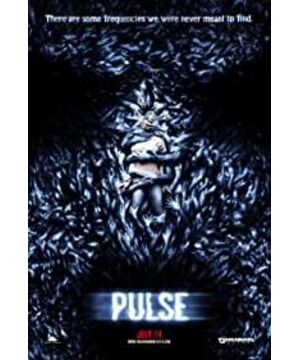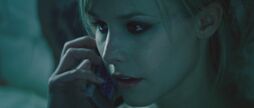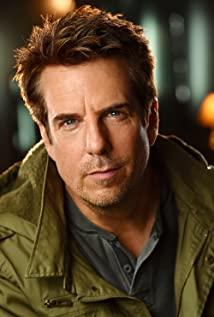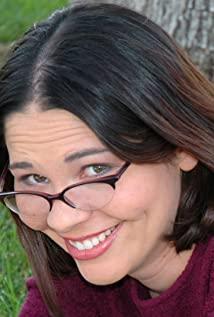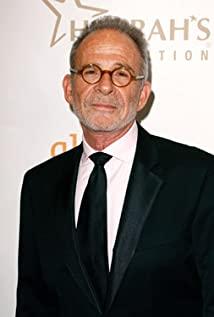Solve almost all your doubts in the Japanese version in your own way: The Origin of the Evil Spirit, Red Tape and the Room. The American version after the adaptation is basically an ordinary 80-year-old school horror film, so there is no connotation at all. If we have to pull up a theme - then this time it can really be said that technology brings a sense of alienation in the communication between people (the heroine's monologue at the end).
But since you've finished watching it, let's briefly talk about the adaptation of the film.
Because the lonely house atmosphere and the lonely house theme of the Japanese version were all abandoned, in exchange for a very clear story: two computer houses discovered a magical frequency of radio waves. Humans start to infect humans after they are released. And red household tape, presumably because of the color and material, is just right to stop this stuff from spreading. Of course, you can only cage the city with tape, and you can't completely stop the ghost virus (let's talk about it first) from raging. So the world is over, and the surviving humans idyll in areas without network coverage.
The relatively problematic characters in the Japanese version are cut into the protagonists of American school horror films with public faces. To be honest, they have almost no characteristics except the pretty heroine. I think this film is very likely to write a few words on the whole piece of paper when it is a character: the hero of a youth horror film, the heroine of a youth horror film, and a number of cannon fodder (including black people) in a youth horror film.
Then I don't know whether the main creator really appreciates the original plot, or just thinks it is very convenient to use, and many plots are directly copied from the cat and the tiger.
A friend who committed suicide in front of him. It has changed very badly. The point of this stalk is that one second your friend is still talking to you normally and the next second you die. In the US version, however, you see that something is wrong with him in the first place.
The cannon fodder man in the protagonist team saw the ghost who almost fell halfway after opening the taboo room. ). Appears in almost the same scene in the US version, but flashes by (and almost falls).
Dead people who turned into shadows. The American version gave a process of transformation, eliminating the abruptness that the Japanese version deliberately emphasized, and turned it into a viral infection story. The Japanese version is usually done by panning the camera or cutting the screen (this is also Kurosawa's usual method). I think the Japanese version works well, but it can also be said that the American version is rich and self-willed and wants to do special effects.
Screaming female jumping off the building. This is basically true and restored, and I also found a tower that is the same as the Japanese version, which is really attentive.
Male headshot with gun in computer window. Replicated, lack of emotional savings. In the Japanese version, the headshot is still a silent film, while the American version has gunshots during the headshot. That's why I'm talking about the American horror
scene ... the image of the head wrapped in a black plastic bag. The Japanese version is Chunjiang, and the American version is placed in the computer window. not bad.
Red tape with taboo room. This is not so much a big change, but a complete reversal. In the Japanese version, the room is "a room that cannot be opened", and in the US version, I also said it is a safe house in the plot above. Then the use of the tape is also reversed (Japanese version: the tape is pasted from the outside, for sealing; the American version, the tape is pasted from the inside, for blocking). In the Japanese version, sticking tape to the door is similar to a ritualistic behavior, but in the American version, it is the second half of a simple and robust urban legend. The reason for this adaptation is obviously related to the theme and story level.
When it comes to the US version of its own original bridges, it is low, that is, all kinds of grimace popping out and tricks accompanied by sound effects, that is, the low-impact tricks of the thriller that everyone knows. There is no way that the director has this level and vision, and it is impossible to expect the director and the actors to be able to control as many long shots as the Japanese version. So there is hardly any novelty in the image, and I was stunned that a trilogy could be made. On this issue, I don't agree with saying that the American version and the Japanese version have different styles. In fact, the American version is of a lower grade.
View more about Pulse reviews


